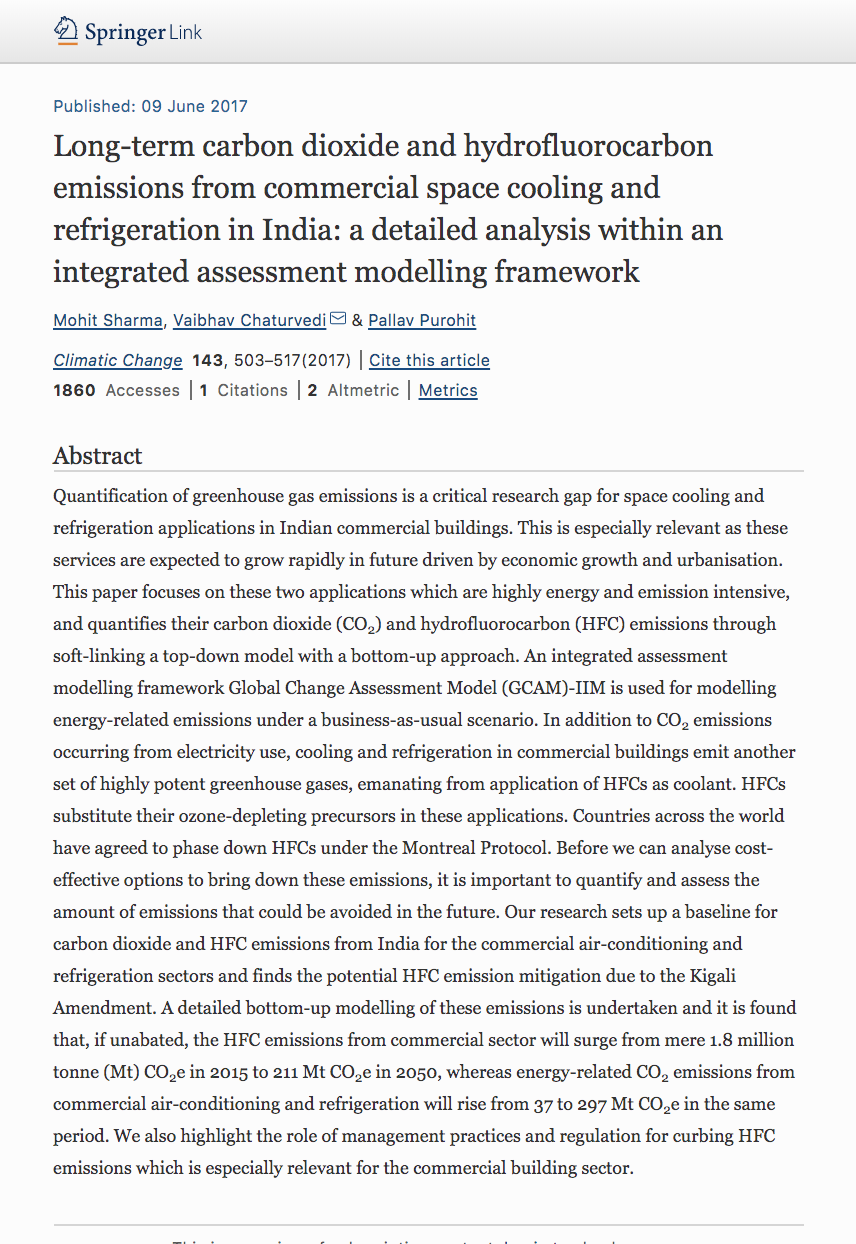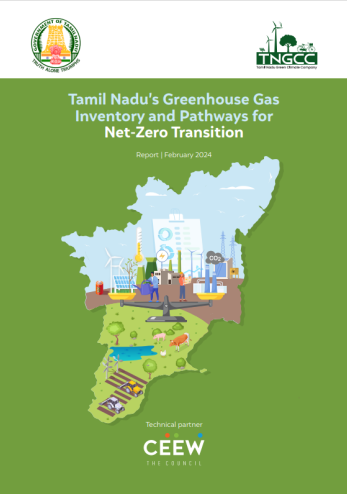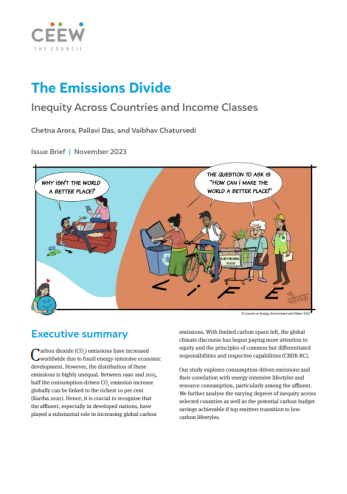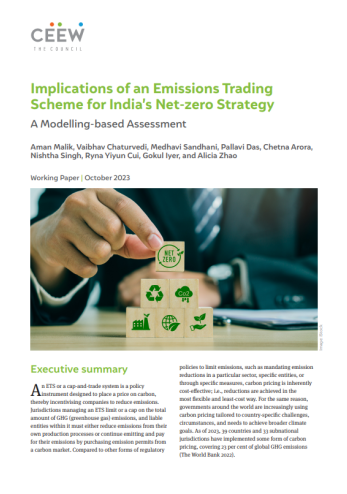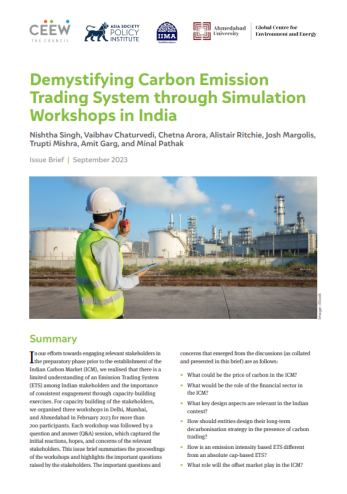Paper
Long Term Carbon Dioxide and Hydrofluorocarbon emissions from commercial space cooling and refrigeration in India
A detailed analysis within an integrated assessment modelling framework
Mohit Sharma, Vaibhav Chaturvedi, Pallav Purohit
June 2017 | Low-carbon Economy, Sustainable Cooling
Suggested citation: Sharma, Mohit, Vaibhav Chaturvedi, and Pallav Purohit. 2017. “Long-term carbon dioxide and hydrofluorocarbon emissions from commercial space cooling and refrigeration in India: A detailed analysis within an integrated assessment modelling framework.” Climatic Change, 143: 503. https://doi.org/10.1007/s10584-017-2002-4
Overview
This paper provides a detailed modelling of energy consumption and resultant direct and indirect emissions from space cooling and refrigeration applications for India’s commercial building sector. Using an integrated assessment modelling framework - Global Change Assessment Model (GCAM, the study also finds the potential HFC emission mitigation due to the Kigali Amendment. Further, the paper highlights the role of management practices and regulation for curbing HFC emissions.
Countries across the world have agreed to phase down HFCs under Kigali Amendment to the Montreal Protocol and India will start phasing out HFCs from 2028. Space cooling and refrigeration applications in Indian commercial buildings are highly energy and emissions intensive and are expected to grow rapidly. It is critical to understand the potential trajectory of energy use and emissions for guiding policy interventions to mitigate potential greenhouse gas (GHG) impact.
Key Highlights
- HFC emissions from the commercial sector will surge from 1.8 million tonnes (Mt) CO2e in 2015 to 211 Mt CO2e in 2050.
- Energy-related CO2 emissions from commercial air-conditioning and refrigeration will rise from 37 to 297 Mt CO2e from 2015 to 2050.
- Total GHG emissions from space cooling and refrigeration in commercial buildings will increase significantly to 508 Mt CO2e/year in 2050, of which HFC emissions will be 40 per cent.
- HFC emissions in total direct and indirect emissions from the Indian residential air-conditioning sector could be 33 per cent by 2050.
- Under a business-as-usual (BAU) scenario, the Indian commercial sector is expected to move towards high GWP refrigerants HFC-134a, HFC 410A, and HFC-404A.
- If near zero global warming potential (GWP) refrigerant options such as Hydrocarbons (HCs) and Hydrofluoroolefins (HFOs) are used, roughly 40 per cent reduction in GHG emission intensity is estimated.
- Mixes of HFCs and HFOs also present a significant potential for almost 20 per cent GHG reductions (assuming a 50 per cent HFC + 50 per cent HFO mix).
- Emissions during servicing and at the end of life lead to a bulk of direct emissions.
- Capacity building for minimising leakages, recovery, and reuse of refrigerants needs to be undertaken.
- HFC emissions in the commercial cooling and refrigeration sectors can be reduced by 50 per cent and 35 per cent, respectively, between 2020 and 2050. This can be accomplished if India adopts best practices by 2020 and the average operational leakages are minimised.
Key Recommendations
- Transition all commercial air-conditioning equipment to non-ozone depleting substances (ODS) alternatives under international commitments at the Montreal Protocol to safeguard the ozone layer.
- Phase down high- GWP HFCs and send a strong signal that eventually all sectors will have to phase down these refrigerants.
- Create a dedicated institutional structure to support R&D for low-GWP alternatives for different sectors and applications.
HFC emissions in the commercial cooling and refrigeration sectors can be reduced by 50 per cent and 35 per cent, respectively, between 2020 and 2050.




